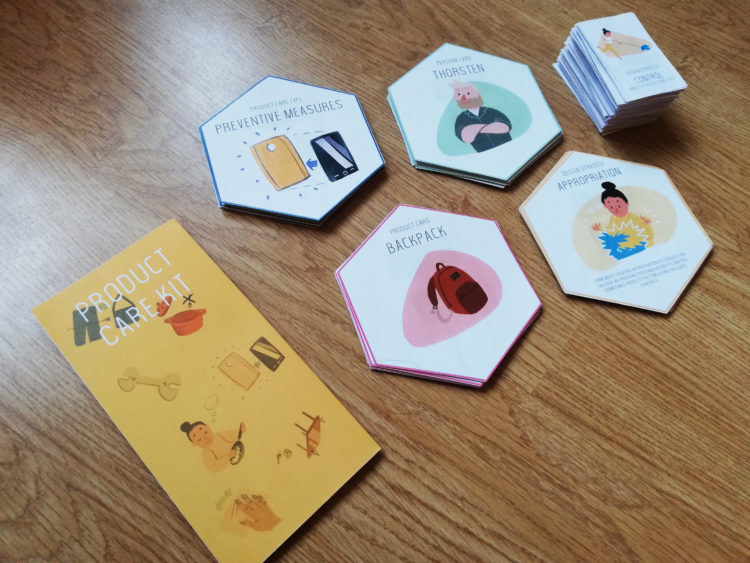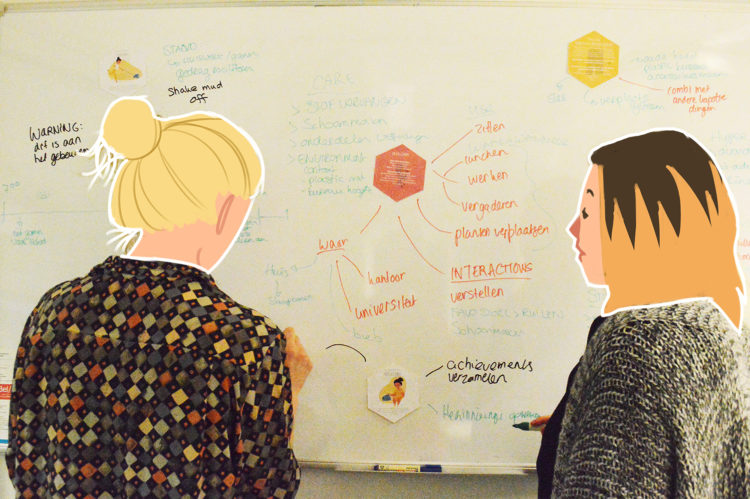Design for Product care: the development of a design tool for product lifetime extension
Sep 2018 - ongoing
The Product Care Kit teaches and inspires designers to evoke product care behavior by users on their belongings.
By Mahana Tuimaka
To realize the shift towards a Circular Economy, products should stay usable as long as possible. The importance of circular design becomes more and more apparent to designers, and design students have become more educated in the topic of circular and sustainable design. But to shift towards a Circular Economy, we do not only need sustainable product and processes, we also need sustainable behavior. Maintaining products is the most efficient way of retaining their desired level of performance and extending product lifetime. This is called Product care. Product care can be understood as any action that helps to prolong the lifetime of a product. These actions can range from intricate or time consuming activities, such as the repair of a vehicle or laundry machine, to washing your clothes on the prescribed settings or cleaning your belongings regularly. When users’ are able and motivate to perform the necessary product care activities, products can last longer than expected and in this way slow done the resource flow of new products. The aim of my thesis was to explore how designers can stimulate users to perform product care activities.
This goal has been reached through a practice-based approach and by connecting it with strategies from existing literature.

During my field research I facilitated creative workshops with designers and design students in which I looked at the solutions that they can already come up with, and which strategies consciously or unconsciously use in their concepts. By comparing these strategies from the workshop to strategies found in literature I was able to identify 8 design strategies for Product care: experiences, enabling, informing, change, reflecting, social, control and appropriation.
These can be used by designers to gain insights in the different ways product care behavior can be stimulated.

To communicate these strategies in an inspiring and accessible way, The Product Care Kit was developed. It is a design tool which consists of a set of magnetic cards used for brainstorming, ideating and discussing. It presents the most important factors which influence Product care. The set consists of the following: an information booklet, persona cards, product cards, product care type cards, design strategy cards and example cards with product solutions for each design strategy.

This tool helps to analyze and understand the context which you are designing for. Due to the flexible nature of the tool, the outcomes can vary depending on what the designer desires. It can lead to a visual map of the context, a better understanding of behavior change and also conceptual design ideas. The Product care kit can potentially lead to sustainable care behavior and lead to physically and emotionally durable products. If design students are taught to always consider sustainable behavior in their designing process, eventually it is no longer Designing for Product care, but merely designing.

Supervisory Team
Ruth Mugge – Chair
Anna Pohlmeyer – Mentor
Stella Boess – Mentor
Laura Ackermann – PhDer & external mentor of the Salzburg University